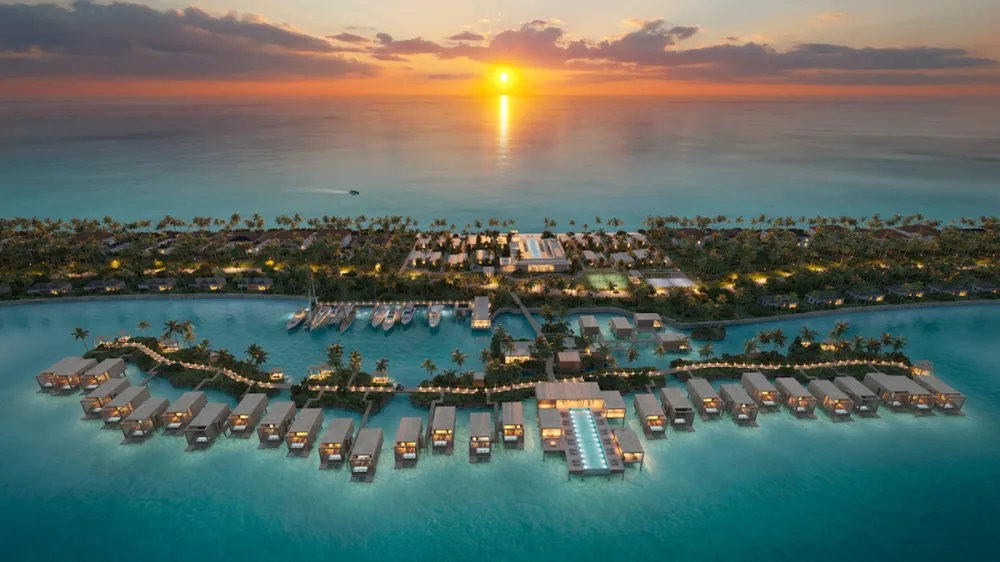Developers are redefining convenience and exclusivity by integrating helipads, runways, and seaplane terminals.
A new generation of luxury residential communities is flying above the usual definition of luxury living—literally. From Florida to Mexico to the Bahamas and beyond, forward-thinking high-end developers are integrating helipads, seaplane terminals, and even private FBOs into their projects, catering to a growing class of buyers who expect to arrive the same way they live: on their own terms.
The trend is accelerating, and Miami was ahead of the curve. Back in 2017, the Ritz-Carlton Residences, Miami Beach debuted what it called “the ultimate amenity": a floating helipad moored in Biscayne Bay. Residents can board the boutique property’s day yacht from its private 36-slip marina, cruise to the offshore helistop, and be airborne in minutes, solving a uniquely Miami dilemma, where traffic to the airport can take longer than the flight itself.
Today, that vision has gone vertical. In Downtown Miami’s District 11, the new E11even Hotel and Residences features all the luxe must-haves—spa, designer interiors, and a buzzing rooftop lounge—but its standout perk is the private helipad on the 65th floor. It joins a growing skyline of aviation-ready towers, including Zaha Hadid’s One Thousand Museum, the first in the city with a rooftop helipad that’s attracted a resident roster that includes David and Victoria Beckham.
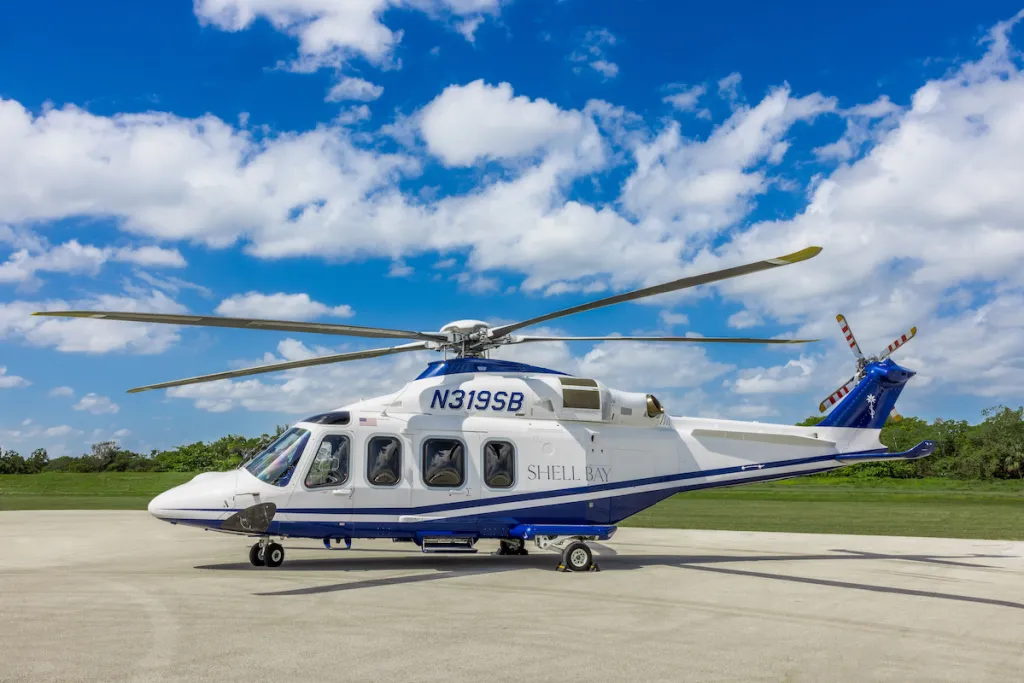
Evan Joseph
Those early innovations helped lay the groundwork for what’s now becoming standard in elite real estate. Take Shell Bay in South Florida’s Hallandale Beach, where a helipad now sits directly on the 18-hole championship golf course. The private, members-only community spans 150 acres along the Intracoastal Waterway and was developed in partnership with Auberge Resorts Collection. The goal, according to CEO and founder of PPG Development Ari Pearl, was to make every arrival feel seamless. “It’s about ensuring every moment here feels simultaneously effortless and exceptional," he tells Robb Report.
The helipad isn’t just for show. It’s part of a bigger strategy to cater to residents who expect privacy, speed, and control. That kind of flexibility is becoming increasingly desirable in today’s market, says Alex Witkoff, CEO of Witkoff. “Buyers want properties they can access seamlessly," he explains. “Private aviation adds another layer of privacy, security, and flexibility that aligns with how our owners live and travel."
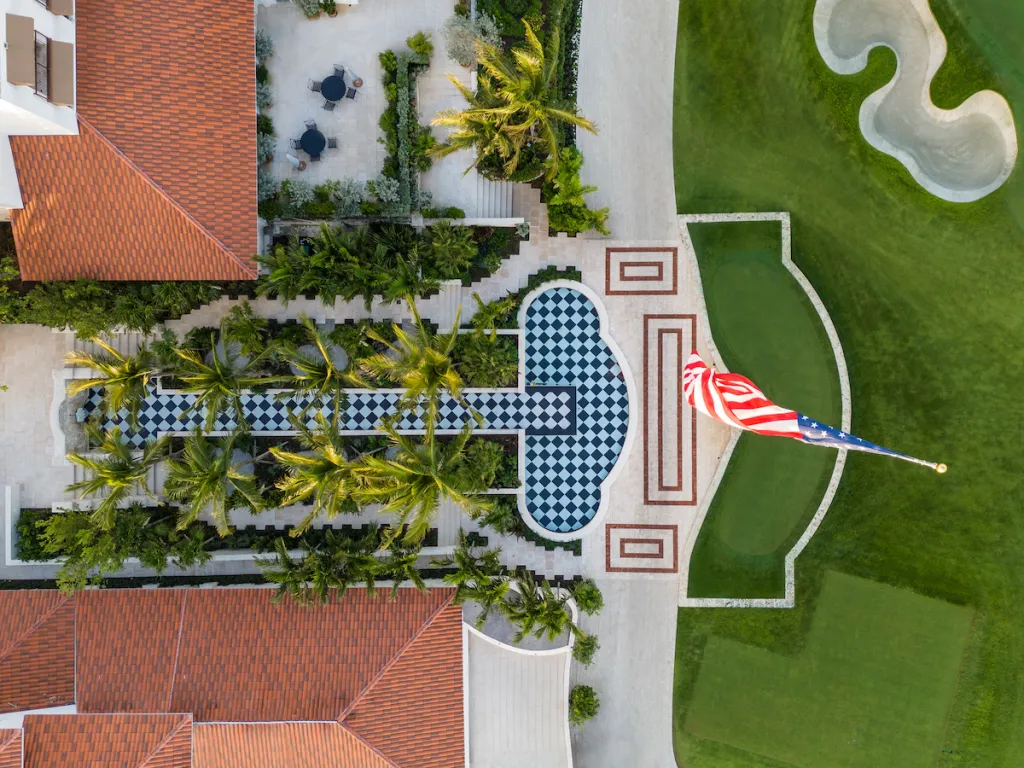
Evan Joseph
That same approach is being embraced offshore at the Banyan Tree Bimini Resort & Residences. Just 48 nautical miles east of Miami, this 750-acre private island enclave aims to become the “Hamptons of the Bahamas," according to Rafael Reyes, owner and developer of Ridge Rockwell Island Development Group. A helicopter landing pad and dedicated seaplane terminal complete with customs and immigration are already in place, with operators like FlexJet and HeliFlite offering regular service.
“Just as New Yorkers rely on helicopters or seaplanes to reach the Hamptons, we wanted our residents to have that same level of effortless convenience here," Reyes says. And many already do—he notes that homeowners are flying in weekly, just as often as they arrive by boat.
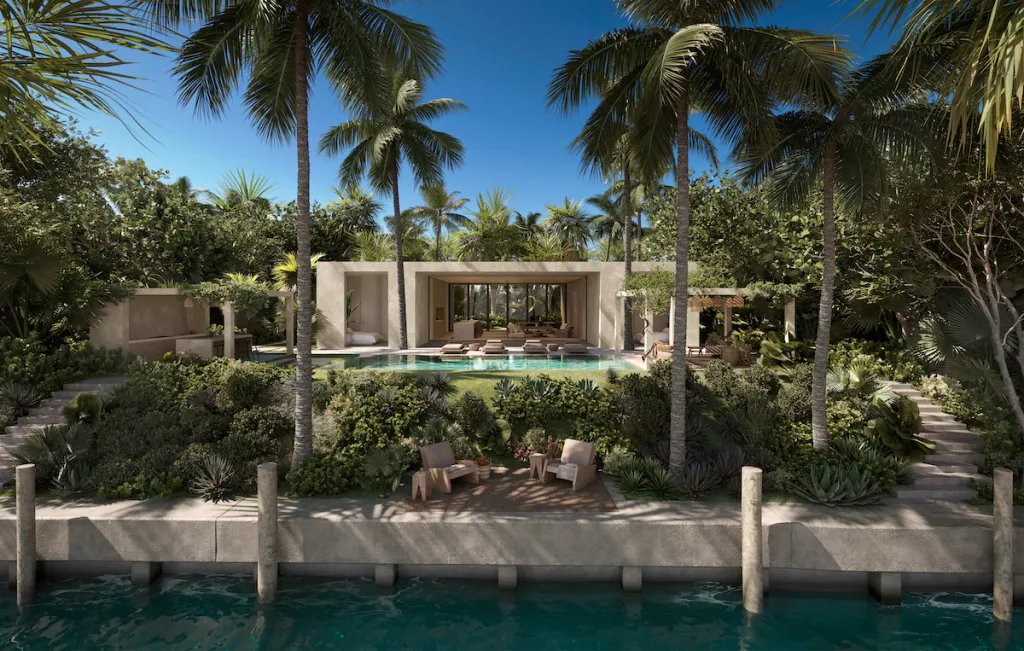
Banyan Tree Bimini Resort & Residences
The homes themselves are just as transportive. Designed by globally renowned architect Chad Oppenheim, the 54 private waterfront residences are fully furnished and conceived to blend into Bimini’s natural landscape. The goal is to erase the line between indoor space and the outdoors. so residents feel immersed in the island environment from the moment they step through the door—or off the helipad.
And while Bimini may feel remote, Reyes says that perception disappears the second you step off a seaplane. “The moment people realize that Bimini is just a 24-minute flight from Miami and Fort Lauderdale, that sense of remoteness disappears. They step off the helicopter or seaplane and are instantly transported into a different country and vibe, which offers a total level of escape."
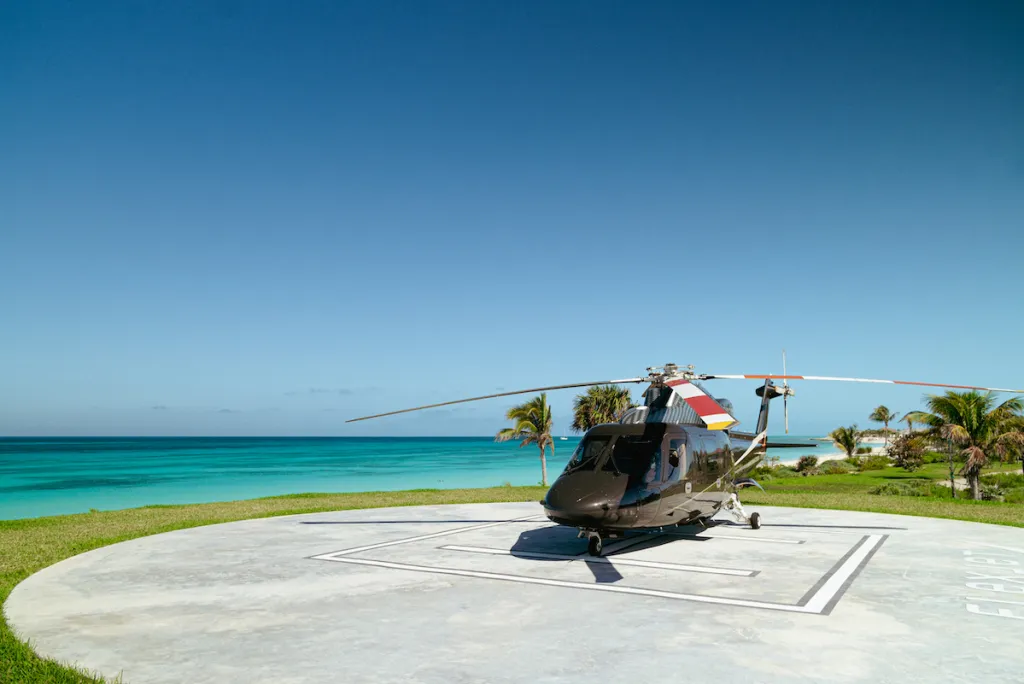
Banyan Tree Bimini Resort & Residences
In Mexico’s Riviera Nayarit, the master-planned community of Nauka is taking things even further. In addition to two on-site helipads, the project is partnering with nearby Tepic International Airport to create a private terminal exclusively for owners. Thanks to a new highway, the airport is now just 35 minutes from the sprawling master-planned community’s oceanfront villas and resorts—including a forthcoming Ritz-Carlton Reserve.
Co-founder and partner Mark Birnbaum says the idea was to unlock an easier way to experience a region that’s poised for major growth. Between the new airport, three federally funded highways, and a coastline with three miles of untouched beaches, “all signs point to a region on the rise," he says. The community also spans four distinct ecosystems, making it one of the most unique natural destinations in North America.
Birnbaum is optimistic about the future of luxury air travel, especially when it comes to sustainability. With advancements making aircraft quieter, cleaner, and more efficient, he envisions private aviation becoming increasingly vital in the ultra-luxury market. “As aircraft technology evolves to be more environmentally friendly, destinations like Mexico and the Caribbean—celebrated for their pristine natural beauty—will only grow in appeal," he explains. “Building the right infrastructure is key to meeting this rising demand responsibly."
From the article by Abby Montanez

